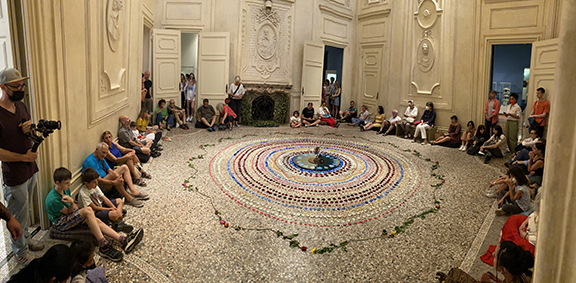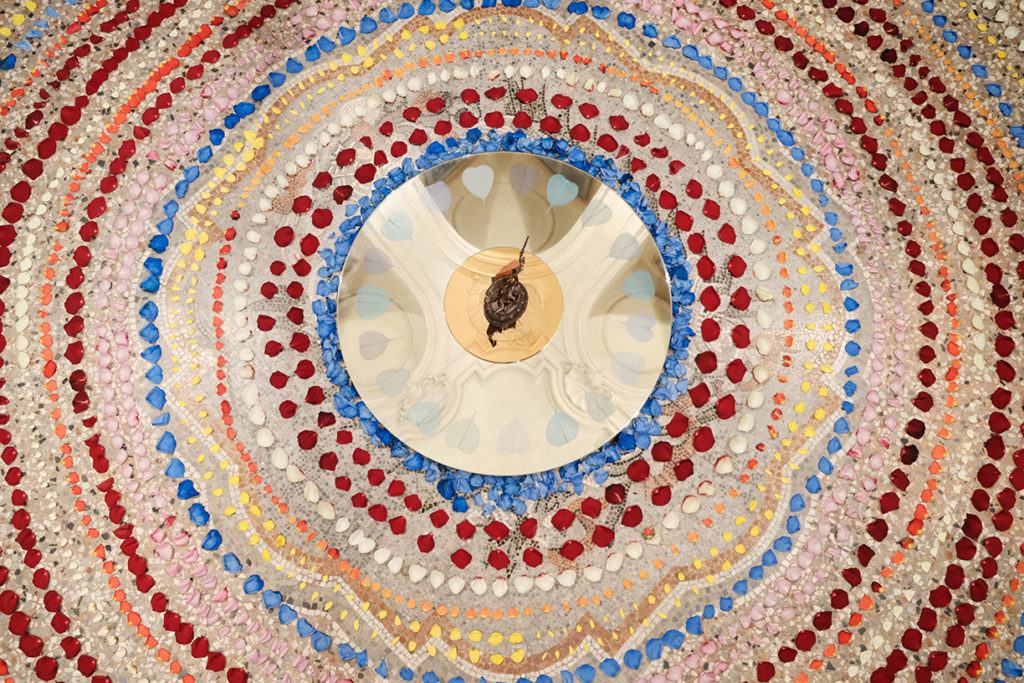Chrysanne Stathacos
The Great Void. From Sound to Image.
May 6, 2022–September 4, 2022MAO Asian Art Museum, Turin
The concept of emptiness, of vacuity, is central to Buddhist doctrine: emptiness is not only the instant that precedes the birth of all things, but it is also the final emptiness, the liberation of all sentient beings at a cosmic level. In Buddhism emptiness has a positive connotation ultimately linked to the achievement of awareness, that is the understanding that life, with its continuous changes, is impermanence and interdependence, since everything exists only in relation to the other. Understanding this, and therefore freeing oneself from the suffering of life, is resolved in a dimension of absolute peace (nirvana): it is here that the essence of Buddha is revealed, who is not divinity, but precisely Emptiness.
The exhibition The Great Void. From Sound to Image which opened at the MAO on May 6, is dedicated precisely to these concepts: the exhibition aims to offer the public a particularly engaging multisensory experience and is also a strong sign of hope for a future that is uncertain and discouraging.
The exhibition opens with a large empty space. It is not an empty space, however, but a space that is gradually saturated with the presence of the notes of the young, award-winning Rome based composer Vittorio Montalti, who has composed the piece “The great Void” for the exhibition.
Visitors are invited by the music to take an experiential and meditative path, to reach the fulcrum of the exhibition, in the Sala Colonne: there, in fact, is exhibited a very rare Tibetan thangka of the fifteenth century, the most precious of the MAO collections, which portrays Maitreya, the Buddha of the Future depicted in splendid robes and seated on the throne of lions. With his hands poised in the dharmacakramudra (the gesture of setting in motion the Wheel of Law), which reveals his future mission as promulgator of the Doctrine, the Buddha holds the stems of plants and flowers, germinal symbols of a future liberation.
As a religious and ritual object, the thangka, with its innumerable symbologies, is a medium that allows the viewer to navigate through the difficult waters of meditation and visualize the various attributes of the deity depicted (in this case Maitreya, the Buddha of the future) and to enter a deep meditative state, in which the images, colors, gestures, and sounds depicted in the painting are revealed in a sublime ritual cosmogony.
The ancient Tibetan thangka is inserted here as the first image, dense and deep, that reveals itself to the spectator after an important sonic and spatial journey. Observing this sacred image after a journey that “cleanses” the gaze and the ear through Montalti’s sounds will therefore be a transcendent experience: a suspended image, in a white noise of sound, a vibrant cosmic rustle, which opens up to a multitude of forms and colors and gestures.
This first painting brings with it the strength of the Tibetan tradition of reproducing Buddhist deities and saints on canvas (the thangka) and that, in modern times, lies at the origin of the photographic portrait of the tulku, to which the final part of the exhibition is dedicated.
In the last two rooms are in fact hundreds of photographs of tulkus, part of a collection of images made from the late nineteenth century to the present day that portray the living Buddhas belonging to the Buddhist schools and bonpo in all areas of the world where Tibetan Buddhism is practiced, redeeming figures whose “mind of wisdom” is reborn in new bodies to lead humanity towards salvation and the Great Void…Buddhism.
In this sense, these are not mere photographic portraits, but authentic objects of veneration, containing the sacredness of presence: in fact, it is believed that the image has the same power as the tulku itself, or more precisely, that the image and the tulku are inseparable.
This collection, begun over a decade ago by the artist Paola Pivi, has now reached thousands of images and constitutes the largest archive of tulku images in the world.
From June 21 to 24, artist Chrysanne Stathacos was a guest of the museum and will create a mandala of mirrors and roses with the performance “Blowing roses.”

